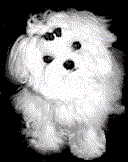

- Phone
- Email puppypetite@aol.com
-
Address
8002 17th Ave, Brooklyn NY 11214

How To Crate Train A Shih Tzu Puppy
Crate training is a method of house training your puppy or dog. The crate is used as a place to keep your puppy when you cannot directly supervise them. It takes advantage of your dog's natural instincts as a den animal. Dogs are naturally den animals and they seek out small, enclosed spaces to provide them with safety and security. You will be providing your dog with its own secure space where it can go when it needs to rest or when it feels frightened or anxious.
Crate training is important for several reasons. Firstly, it can help to speed up the house training process as dogs do not like to soil their own dens and will, therefore, learn to control their bladder and bowels when they are in their crate. Secondly, it provides your dog with a safe space of their own where they can retreat to when they need some quiet time or when they are feeling stressed. Lastly, it is a useful tool for preventing destructive behavior and keeping your puppy safe when you can't directly supervise them.


The Process of Crate Training Your Shih Tzu Puppy
Crate training, though seemingly straightforward, requires a methodical approach, particularly when dealing with a Shih Tzu puppy, which is known for their energetic and stubborn nature. The procedure involves gradual steps to make your puppy familiarize and accept the crate as a safe and secure space.
Introduce the Crate:
Start by placing the crate in a frequently inhabited area of your home. Add a comfortable blanket or bed inside, and leave the door open. Encourage your Shih Tzu to explore it voluntarily through gestures and treats.
Feed Meals in the Crate:
Begin feeding your puppy their meals inside the crate. This will create a positive association with the crate. Start with the door open, and over time, close the door during meal times, opening it once they are done eating.
Extend Crate Time:
After your puppy is comfortable eating in the crate, start extending their time in the crate. Use a command word, give a treat, and point to the inside of the crate. Close the door, and after a few minutes of calm, let them out and offer praise.
Crate them When You Leave and at Night:
Once your Shih Tzu is comfortable in the crate for about 30 minutes, you can start crating them when you leave for short periods and at night. Don't make a fuss when you leave or return home, to prevent anxiety.
Never Use the Crate as Punishment:
The crate should always be a positive, safe space. Never use it as a method of punishment, or your puppy will start to fear and avoid it.
Implementing these steps will facilitate a smoother crate training process for your Shih Tzu puppy. Patience and consistency are pivotal during this process as your furry friend adapts to their new environment. Remember, the aim of crate training is not to confine your pet, but to provide them with a safe, cozy space of their own. The successful completion of this training will be a milestone in the healthy upbringing of your Shih Tzu.

Getting to Know The Shih Tzu Breed
The Shih Tzu, often referred to as the "little lion", is a breed that embodies beauty, affability, and vivacity. This breed, with its deep roots in Chinese history and association with royalty, is a living testament to the saying, "big things come in small packages."
Appearance
One of the first things you'll notice about a Shih Tzu puppy is their adorable appearance. They are small, standing only 9 to 10.5 inches at the shoulder and weighing between 9 and 16 pounds. Their most striking features are their large, dark eyes, which are filled with warmth and friendliness, their short snout, and their luxurious, floor-length double coat, which can come in a variety of colors.
Personality
Shih Tzus have a personality as charming as their looks. They are renowned for their cheerful, outgoing, and affectionate nature. They love being part of a family and are great with children and other pets. Despite their small size, Shih Tzus are not timid; they're known to be courageous with a dash of stubbornness, which can at times make training a bit of a challenge. However, their love for their humans and eagerness to please more often than not triumphs over their stubborn streak.
Despite their regal appearance, Shih Tzu puppies have a playful and mischievous side too. They're always up for a game or a cuddle session and their lively antics are sure to keep you entertained. At the same time, they know when to wind down and enjoy a peaceful nap, making them excellent companions for both active owners and those who prefer a more relaxed lifestyle.
The Shih Tzu breed, with their eye-catching looks and engaging personalities, make them an irresistible choice for many. Their loyalty, affection, and ability to adapt to various lifestyles make them excellent companions. If you are looking for a friendly, cute, and entertaining furry friend, a Shih Tzu puppy could be your perfect match. Remember, however, that every puppy requires love, care, and commitment, and a Shih Tzu is no different. With the right approach, you will have a lovable companion to share your life with.
Choosing the Right Crate
When it comes to crate training your Shih Tzu puppy, the crate you choose can make a significant difference. Picking the right crate is as crucial as the training process itself, as it can influence how quickly and effectively your furry friend adapts to this new environment. Let's delve into the factors you should consider when selecting the perfect crate for your Shih Tzu.
Size of the Crate
The crate should be just large enough for your Shih Tzu to stand, turn around, and lay down comfortably. If the crate is too large, your puppy may use one end as a bathroom and the other for sleeping, which can hinder house training.
Material of the Crate
Crates are typically made from wire, plastic, or fabric. Wire crates offer good ventilation and visibility, plastic crates can feel cozier and more secure, and fabric crates are lightweight and portable. Choose the type that best suits your puppy's needs and your lifestyle.
Portability of the Crate
If you plan to travel frequently with your puppy, consider a lightweight and collapsible crate for convenience. On the other hand, a sturdier and heavier crate might be better for home use.
Security of the Crate
Ensure the crate has a secure locking mechanism. This will keep your Shih Tzu safe and prevent them from accidentally escaping and potentially getting into dangerous situations.
Comfort of the Crate
Add a soft bed or blanket to the crate to make it more comfortable for your puppy. However, avoid putting in too many items as this can limit space and impede air circulation.
Ease of Cleaning
Crates should be easy to clean to maintain hygiene. Crates with removable trays or those made from easy-to-clean materials like plastic can be a good choice.
Door Position
Some crates offer multiple doors, which can be handy depending on where you plan to position the crate in your home. Remember that easy access will make the crate more welcoming for your Shih Tzu.
When it comes to crate training, remember that every Shih Tzu is unique and what works for one may not work for another. So, there might be a bit of trial and error involved. In the end, the goal is to provide a safe, comfortable, and secure environment for your little furry friend. With the right crate and effective training, your Shih Tzu will have a cozy space they can call their own, adding to their sense of security and well-being in their new home.
